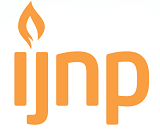Pengembangan Model Konservasi Discharge Planning Terstruktur Terhadap Individual And Family Self Management Diabetic Foot Ulcer
DOI:
https://doi.org/10.18196/ijnp.v3i1.2218Abstract
Background : Diabetic foot ulcers generally causing low selfmanagementbehaviorsandqualityoflife, requiring of nursing intervention to improve individual and family selfmanagement. The intervention is the process of behavioral changes in patients and families through health education. Health education for participants and families can be implemented through discharge planning to provide the information, to identify needs and to plan the return and to prepare participants to leave the health service, beginning at admission until discharge, including diabetic foot ulcers client.
Objective: To develop a model of the structured discharge planning conservation for individual and family self-management of diabetic foot ulcers.
Research Methodology: This study using action research design by collecting data through The Conceptual Content Cognitive Map (3CM) and Triangulation followed by presenting descriptive data. The number of participants in this study are 4 patient and 4 family for pre action research with accidental sampling, 6 nursing for action research with purposive sampling, 4 experts for triangulation with accidental sampling, and 10 nursing and practitioners with accidental sampling for validation of structured discharge planning conservation tools for individual and family self- management of diabetic foot ulcers.
Results: There are categories of participants needs in the individual and family selfmanagement, which are:
(a) knowledge, (b) beliefs, (c) self-regulation, (d) social facilities, (e) self management behaviors. The results of action research is the completion of discharge planning conservation tools that structured by four cycles of study.
Conclusion: The presence of structured discharge planning conservation tools expected to increase individual and family self management. Necessary to implementation and validatin of tools model structured discharge planning conservation
Keywords: Diabetic foot ulcers, Tools, Structured discharge planning conservation, Individual and family self management.
References
Agustin,R.(2013). Pengembangan Model Discharge Planning Dalam Pelayanan Keperawatan. Tesis FKP Universitas Airlangga, Surabaya.
Austin, L.P. (2011). The Nurse’s Knowledge of Blood Conservation as a Part of Blood Management. Retrieved September 12, 2013, From Published Online ProQuest LLC.
Ayele, K., Tesfa, b., Abebe, L. (2012). Self Care Behavior Among Patients With Diabetes In Harari, Eastern Ethiopia: The Health Belive Model Perspective. Plos One. 7 (4), 1-6 April, 2012. Retrieved September
, 2013, From http www.plosone.org/.../ info%3Adoi%2F10.1371.
Bandura, A. (1997). Self Efficacy. Diunduh tanggal 12 September 2013, dari http://www.des. emory.edu/mfp/BanEncy.html.
Bryant, R & Nik, D. (2007). Acute and Chronic Wound Current Management Concept. St.Louis: Mosby Elservier.
Carey, K, Neal J & Collins E (2004). A psychometric analysis of self-regulation questionnaire; Addictive behaviors, 29 (2004), p.253-269,
diperoleh pada tanggal 21 Januari 2014 dari www.ncbi.nlm.nih.gov/pubmed.
Carpenito, L.J. (2002). Nursing Diagnosis and Collaborative Problem. Philadelphia: Lippincut.
Casillas, E, Schulz, M, Robbins, S, Santos, P & Lee, R. (2006). Exploring the meaning of motivation across cultures: irt analyses of the goal instability scale, Journal of Career Assessment, vol. 14, no. 472.
Firman, A., Indah W., Dadang, R. (2012). Kualitas Hidup Pasien Ulkus Diabetik Di Rumah Sakit Umum Daerah Serang Tahun 2012.
Foley, L. (2007). Where to the Diabetic Foot Ulcer. Retrieved September 12, 2013, From http://www.awma.com.au/journal/library
/1502_03.pdf.
Gitawati.D.S. (2013). Model Self Management Individu dan Keluarga terhadap Quality of Life Penderita Diabetes Mellitus (DM) tipe 2. Tesis FKP Universitas Airlangga, Surabaya.
Hager, J.S. (2010). Effects of a Discharge Planning Intervention on Perceived Readiness for Discharge. Doctor of Nursing Practice Systems Change Projects Nursing, St. Catherine University.
Handayani, T.W. (2010). Pengaruh Pengelolahan Depresi dengan Latihan Pernafasan Yoga terhadap Perkembangan Proses Penyembuhan Ulkus Diabetikum di Rumah Sakit Pemerintah Aceh. Tesis, FIK Universitas Indonesia. Jakarta.
Holt, CL, Clark, EM, Roth, D, Crowther, M, Kohler, C, Fouad, M, Foushee, R, Lee, P & Southward, P (2011). Development and validation of an instrument to assess perceived social influence on health behaviors, Journal of Health Psychology, 2010 15: 1225 originally published online 3 June
, diperoleh pada tanggal 11 Januari
, dari http://hpq.sagepub.com/ Hussein, R.N, et al. (2010). Impact of diabetes
on physical and psychological aspects of quality of life of diabetes in erbil city, Iraq. Duhok med j. 4 (2), 45- 59, Retrieved
September 12, 2013. From http://www. uod.ac/articles_files/no6.9.pdf.
Iversen, M.M.,et al. (2009). The Association Bettwen History of Diabetic Foot Ulcer, Perceived Health and Psychological Distress: The Nord Trondelag Health Study.
Jeffcoate, W.J., Harding, K.G. (2003). Diabetic Foot ulcer: a Review. Retrieved September 12, 2013, From http://www.epodiatry.com/ diabeticfoot.htm.
Misnadiarly. (2005). Permasalahan Kaki Diabetes dan Upaya Penanggulangan. http://www. honson_kaki diabetic.htm. diunduh tanggal 01 Oktober 2013.
Perkumpulan Endokrinologi Indonesia. (2006). Konsesus: Pengelolahan dan Pencegahan Diabetes Mellitus Tipe 2 di Indonesia. PERKENI: Jakarta.
Perry, A. G. & Potter, P. A. (2005). Buku Ajar Fundamental Keperawatan: Konsep, Proses, dan Praktik. Volume 1, Edisi 4. EGC: Jakarta.
Rekam Medik PKU Muhammadiyah IIYogyakarta. (2014). Laporan Tahunan Diagnosa Pasien. PKU Muhammadiyah Yogyakarta.
Rondhianto. (2011). Pengaruh Diabetes Self Management Education dalam Discharge Planning Terhadap Self Efficacy dan Self Behaviour Pasien Diabetes Mellitus Tipe 2, Tesis FKP Universitas Airlangga, Surabaya.
Rosyad, Y.S (2014). Persepsi Gay Terhadap Stigmatisasi Gay Oleh Petugas Kesehatan. Skripsi STIKES A.Yani Yogjakarta.
Ryan, Polly & Sawin, Kathlen J. (2009). The Individual and Family Self- Management Theory: Background and Perspectives on Context, Process, and Outcomes’, Nurs Outlook, vol. 57, no. 4, p. 217–225, Retrieved
September 12, 2013, From http://www. ncbi.nlm.nih.pdf.
Sarwono & Meinarno (2009). Psikologi Sosial: Individu Dan Teori-Teori Psikologi Sosial, Balai Pustaka: Jakarta.
Skarbek, Edyta Anna. (2006). Psychosocial predictors of self-care behaviors in type
diabetes mellitus patients: analysis of social support, selfefficacy, and depression. a disertation’, diperoleh pada tanggal 13 Januari 2014, dari http:/citeseerx.ist.psu.edu/ viewdoc/download?doi=10.1.1.118.
Souza, D., et al. (2013). Quality Of Life and Self- Esteem of Patients With Chr onic Ulcers. Retrieved January 02, 2014. From Acta Paul Enferm journal 26(3):283-8.
Tang, TS, Brown, MB, Funnell, MM & Anderson, RM (2008). Social Support, Quality of Life and Self-Care Behaviors Among African Americans With Type 2 Diabetes’, The Diabetes Educator, vol. 34, p. 266, Retrieved September 12, 2013, From http:// tde.sagepub.com/content/34/2/266. short.
Wijanarko, Yeni. (2012). Hubungan Tingkat Pengetahuan Penderita Diabetes Tipe II Tentang Perawatan Kaki Diabetes Dengan Kejadian Ulkus Kaki Diabetes di RSU Dr. Saiful Anwar Malang. Skripsi UNIBRAW, Malang.
Wijaya Dodi. (2013). Flow Chart Perencanaan Pulang. Tesis Universitas Indonesia, Jakarta.
World Health Organization. (2012). Health Topics: Diabetes. Retrieved September 12, 2013. From http://www.who.int/topics/ diabetes_mellitus.
Wu, SF. (2007). Effectiveness of self management for persons with type 2 diabetes following the implementation of a self efficacy enhancing intervention program in Taiwan’, Quensland University of Technology Schooll of Nursing, Retrieved September 12, 2013. From http://eprints.qut.edu.au/.
Downloads
Issue
Section
License
License
Articles published in the IJNP (Indonesian Journal of Nursing Practices) are licensed under a Attribution 4.0 International (CC BY 4.0) license. You are free to:
- Share — copy and redistribute the material in any medium or format.
- Adapt — remix, transform, and build upon the material for any purpose, even commercially.
This license is acceptable for Free Cultural Works. The licensor cannot revoke these freedoms as long as you follow the license terms. Under the following terms:
Attribution — You must give appropriate credit, provide a link to the license, and indicate if changes were made. You may do so in any reasonable manner, but not in any way that suggests the licensor endorses you or your use.
- No additional restrictions — You may not apply legal terms or technological measures that legally restrict others from doing anything the license permits.
Copyright
Authors who publish with IJNP (Indonesian Journal of Nursing Practices) agree to the following terms:
- Authors retain copyright and grant IJNP (Indonesian Journal of Nursing Practices) the right of first publication with the work simultaneously licensed under an Attribution 4.0 International (CC BY 4.0) that allows others to remix, adapt and build upon the work with an acknowledgment of the work's authorship and of the initial publication in IJNP (Indonesian Journal of Nursing Practices).
- Authors are permitted to copy and redistribute the journal's published version of the work (e.g., post it to an institutional repository or publish it in a book), with an acknowledgment of its initial publication in IJNP (Indonesian Journal of Nursing Practices).














